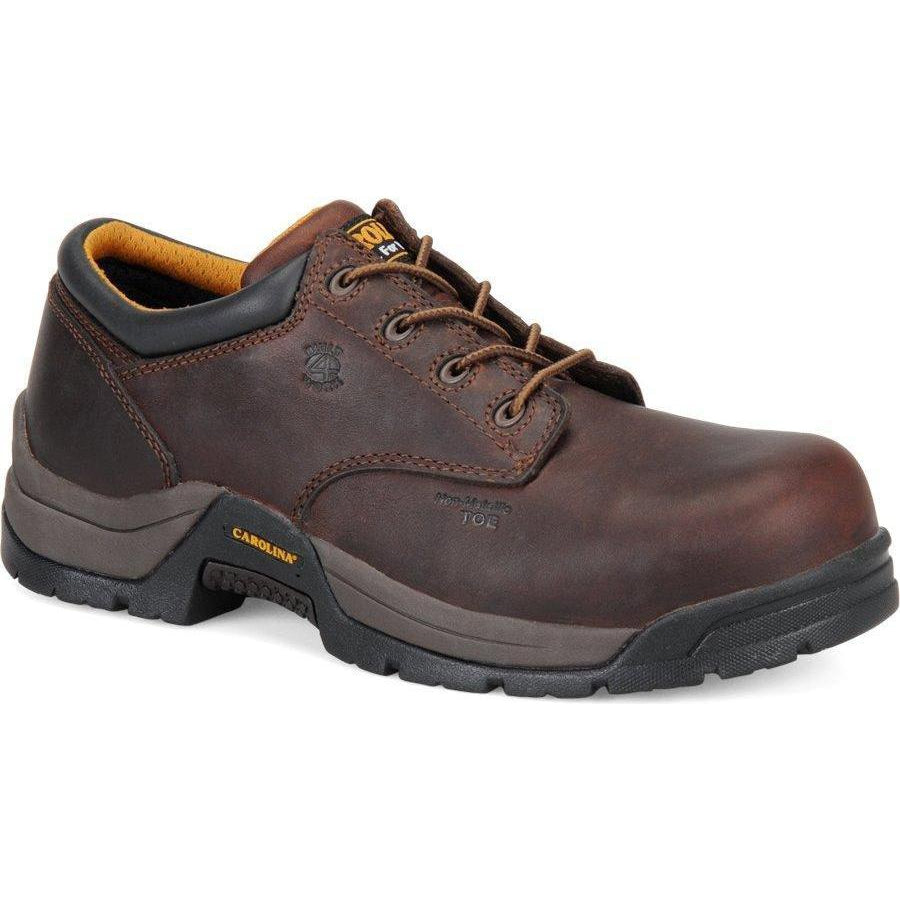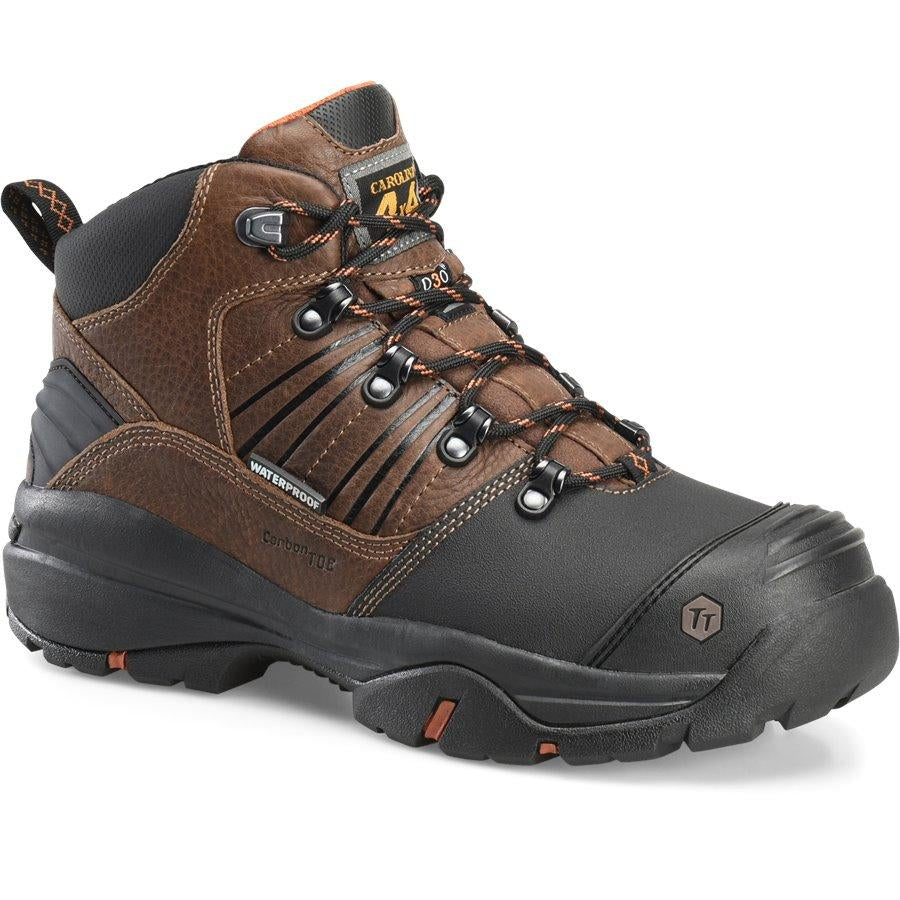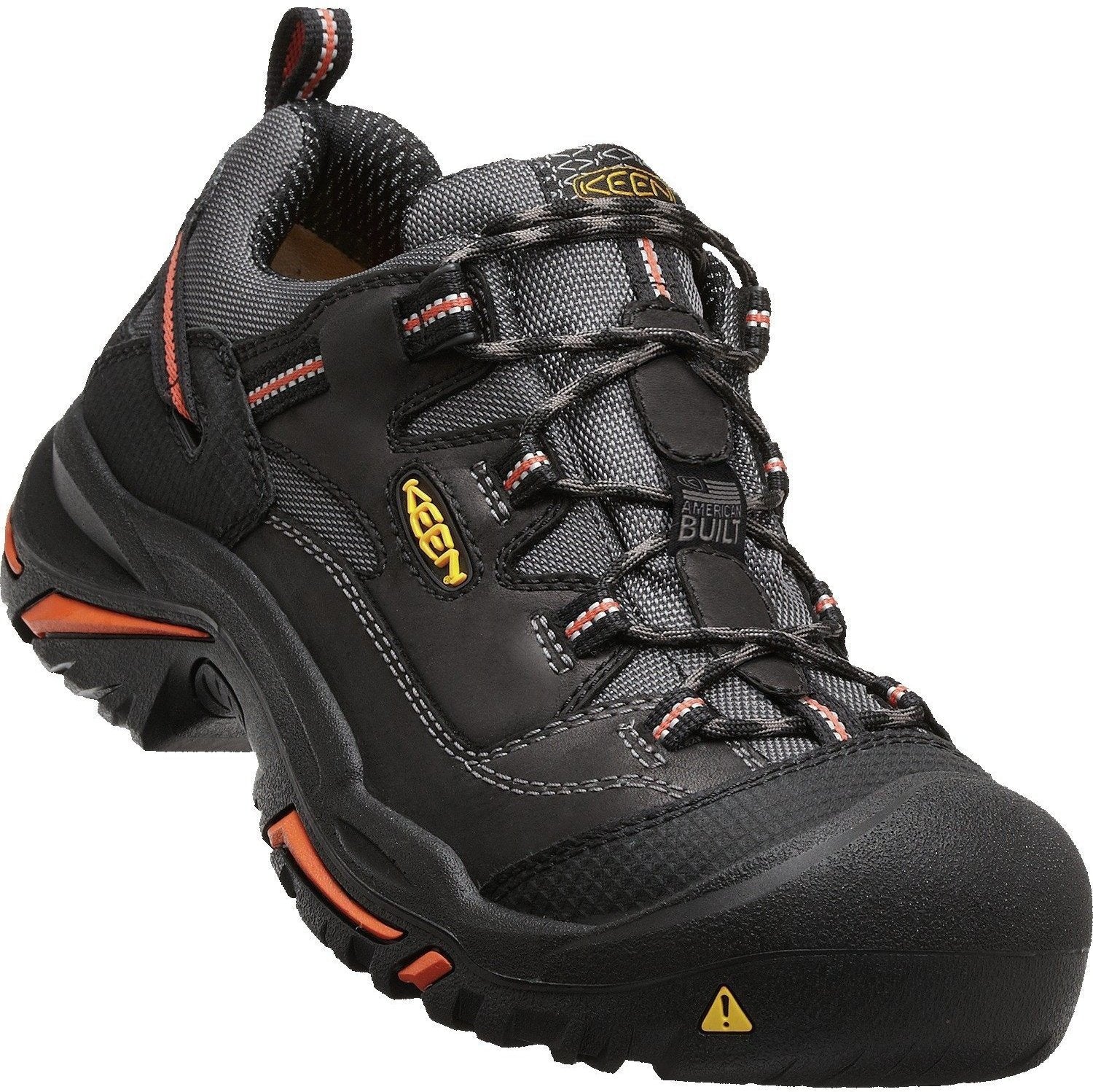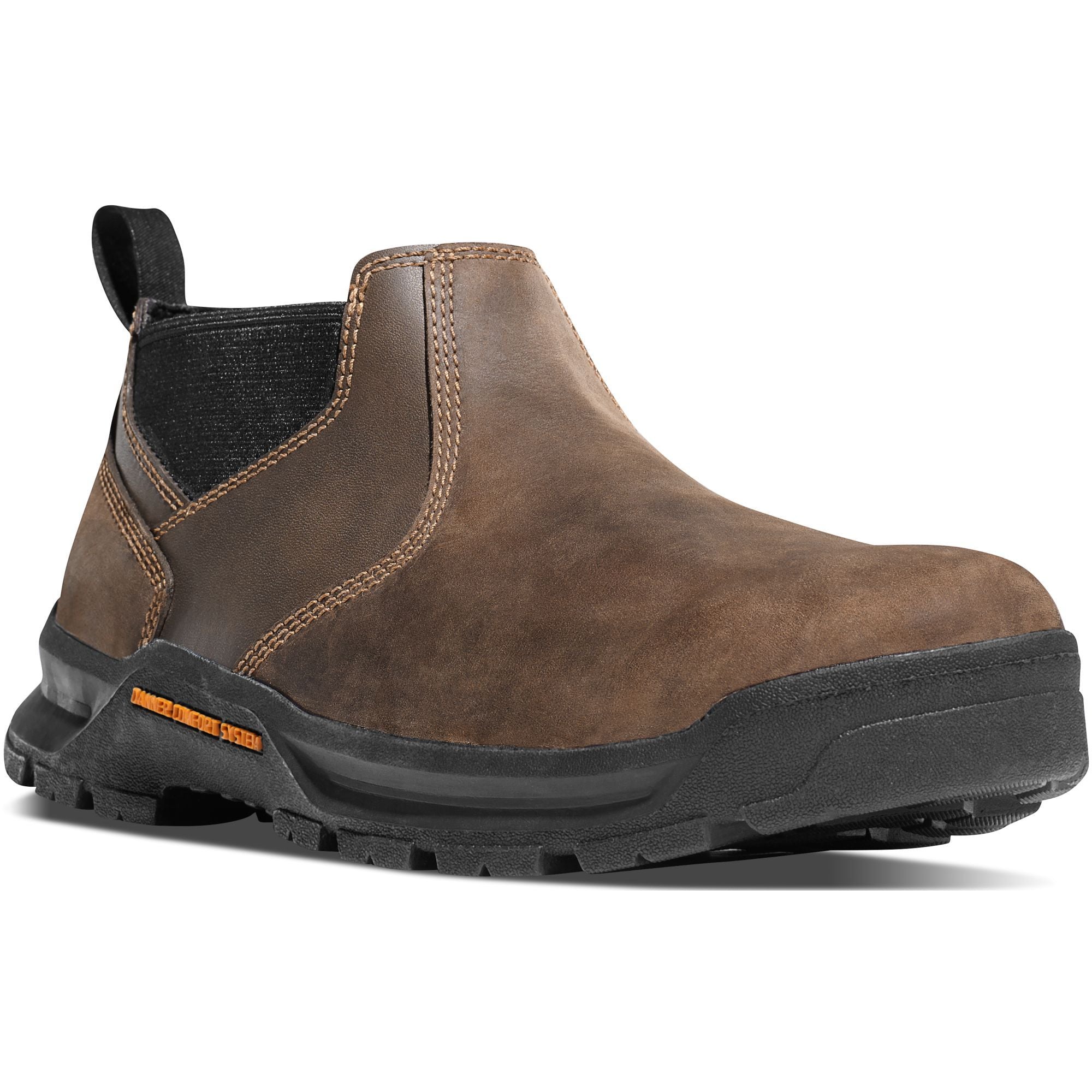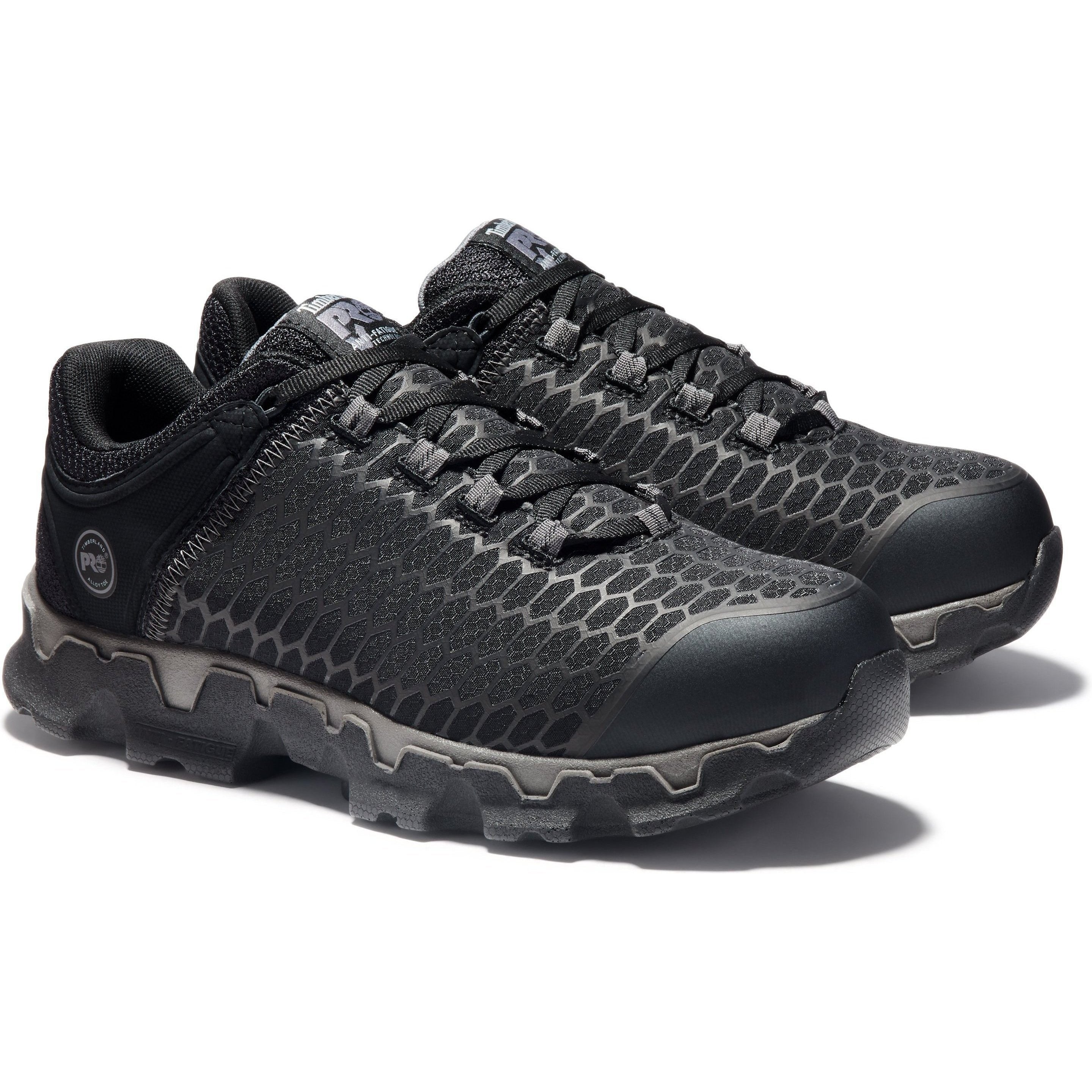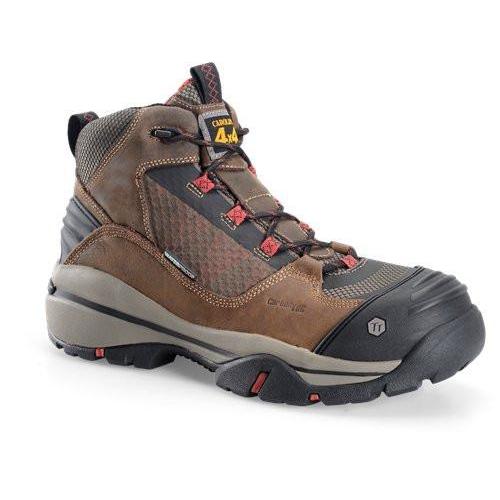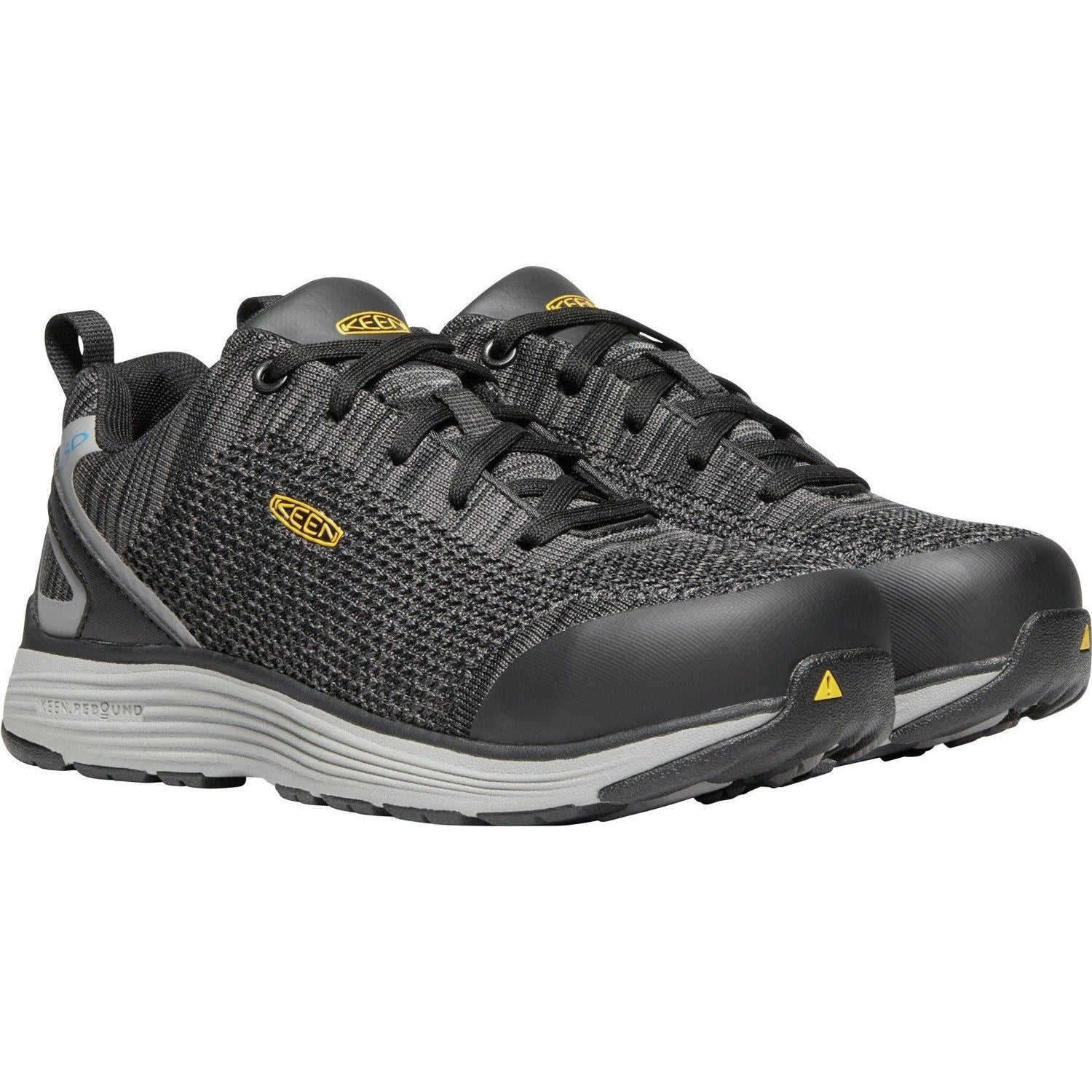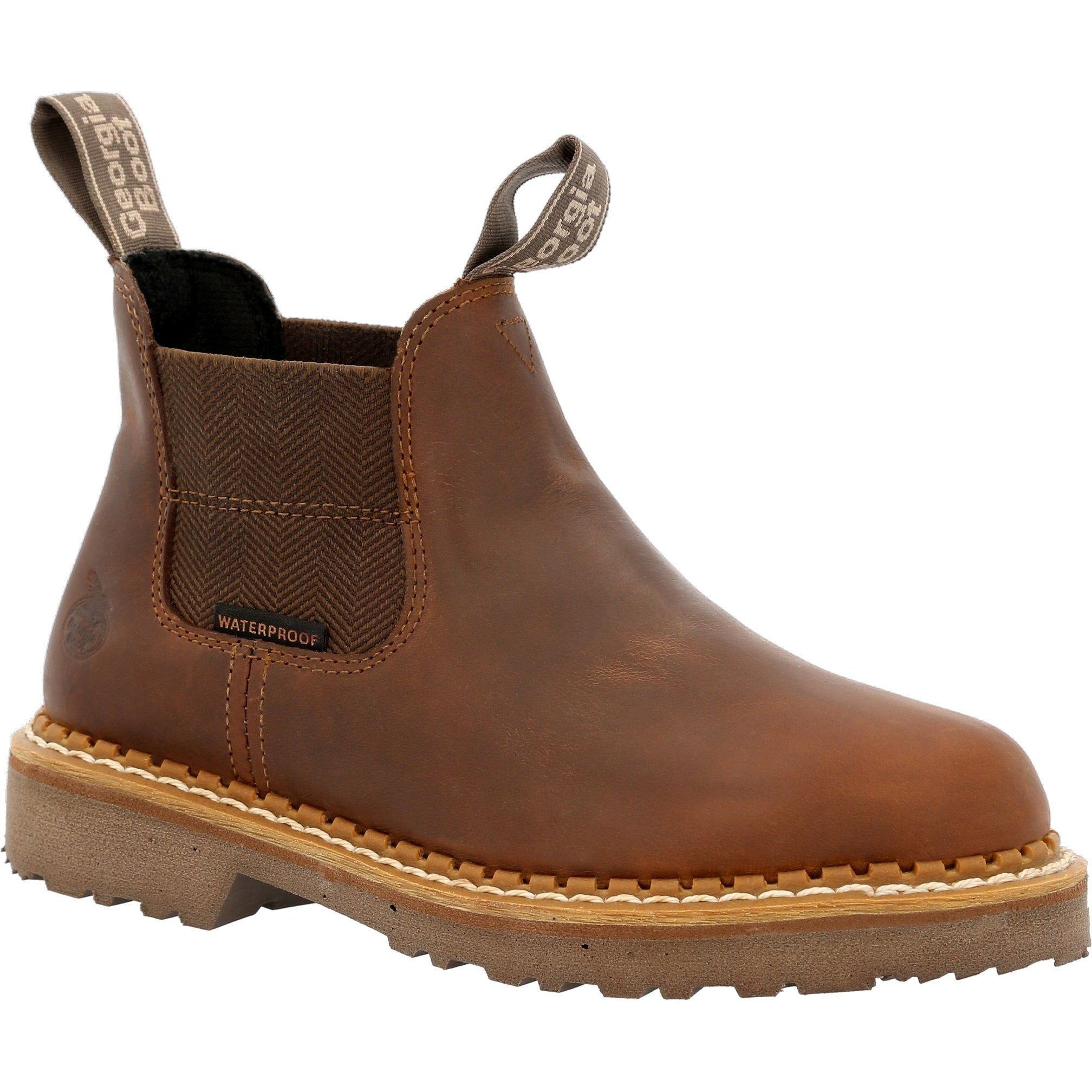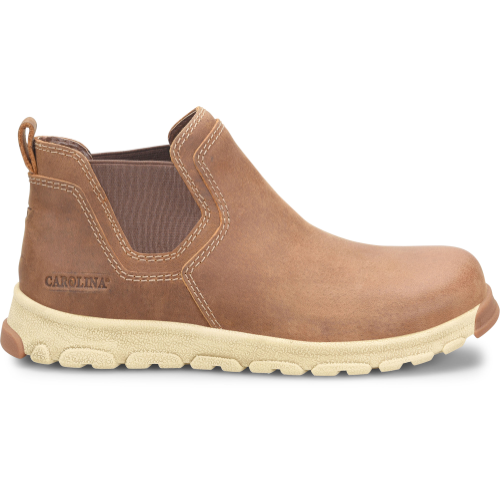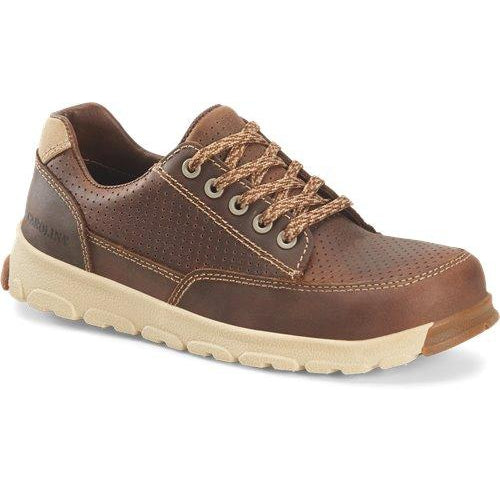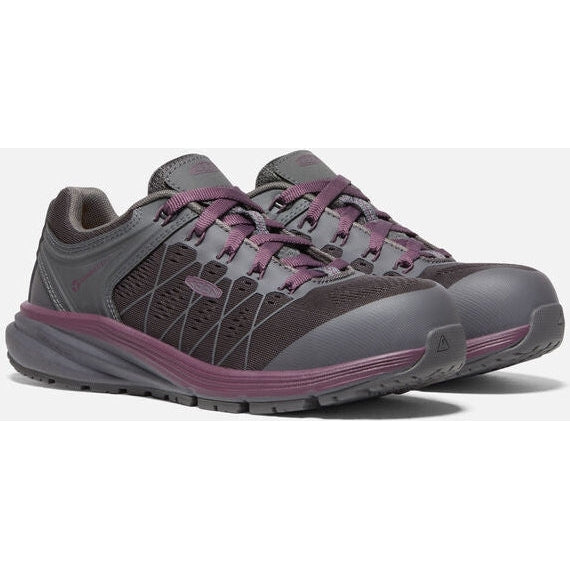Step into the realm of footwear safety with non-slip shoes! Designed to conquer wet and slippery conditions, these specialized wonders boast rubber outsoles with an iron grip. Versatility is their middle name, making them the go-to choice for countless situations. Bid adieu to slips, trips, and falls as these shoes become your ultimate guardians, shielding you from injuries and giving you peace of mind.
Embraced by many, non-slip shoes find their truest devotees among those whose feet never rest. Whether conquering the workday hustle or relishing in leisure, these anti-slip warriors ensure your journey is free from slips, blisters, chafing, punctures, or other unwelcome surprises.
But do you know what non-slip shoes are, how they work, and how to differentiate between slip-resistant and regular shoes? If not, keep reading to learn more, update your footwear knowledge, and make an informed buying decision!
What Are Slip-Resistant Shoes?
Unlike the typical shoe design, slip-resistant or non-slip shoes are specifically designed to reduce slips, trips, and accidental falls. Their outsoles have grippy treads, keeping you stable on your feet while walking on wet and slippery terrains.
Do slip-resistant shoes actually work? You bet! With non-slip footwear, you can confidently navigate challenging, slick surfaces like oily kitchen floors or icy sidewalks, knowing that the specialized traction patterns will help prevent unfortunate everyday life and workplace accidents and keep your feet safe.
Today, they are available in a range of styles to suit anyone's preferences!
[prc-collections-carousel]
Who Can Benefit from a Non-Slip Pair?
Slip-resistant shoes are essential for workplace safety (slippery floors, anyone?), and great companions for outdoor adventures, ensuring you stay sure-footed in any weather condition.
Slip-resistant footwear is ideal for construction and food service workers, healthcare professionals, and people working in similar industries where workplace injuries pose a greater risk. Naturally, non-slip footwear is also invaluable for anyone walking in wet conditions or tackling slippery terrains.
- Workers in specific industries: People who work in environments where slip hazards are common, such as restaurants, hospitals, boats, construction sites, warehouses, or other slippery environments.
- Health and safety professionals: Occupational health and safety managers, consultants, or individuals responsible for workplace safety regulations.
- General consumers: Anyone looking to purchase shoes that provide better traction and slip resistance for everyday use or specific activities.
- Parents and caregivers: Concerned about their children's safety or elderly family members who may be more susceptible to slip and fall accidents.
- Active individuals: Hikers, runners, or athletes looking for working boots that enhance grip on various terrains.
How Do Non-Slip Shoes Work?
Non-slip shoes are designed to prevent or reduce slips, trips, and falls, usually leading to ankle sprains. But what do non-slip shoes do, exactly, to achieve this? Athletic shoes with higher levels of friction have deep tread grooves. Deep grooves can prevent slips and falls because they grip the ground. The more grooves the shoes have on the outsoles, the more slip resistance they offer.
The friction you get from each tread groove ranges between 0.018 to 0.108 on average, depending on the surface you're walking on. The secret of shoe grip lies in the intricate dance between outsole patterns and their impact on traction. Circle outsoles and creative designs wield the power to elevate grip levels, making them the superheroes of wet and oily surfaces.
Flat designs lead to slippery predicaments, as they fail to keep the liquids away, increasing the odds of a not-so-graceful tumble. The tread material of anti-slip soles also plays an important role – high-quality rubber grips well on wet and oily surfaces and offers strong traction.
Key Features of Non-Slip Shoes
What is the difference between regular and non-slip shoes? Several features set non-slippery shoes apart from other types of shoes, including the sole's design, materials, and pattern.
Materials

Materials used in shoe manufacture come into play when they come in contact with the ground. The best non-slip work shoes are usually softer on the outside, while their outsoles are typically made of high-grade rubber and sometimes synthetic rubber. Rubber soles make them slip-resistant, allowing for an efficient grip on slippery, wet, and greasy surfaces.
Design
Besides slip-resistant soles, the shoe's design impacts its slip-resistance level. Slip-resistant work shoes have a unique design that allows them to provide a reliable grip in a variety of styles.
Pattern
The right pattern in the outsole creates traction and provides a firmer grip for the wearer to prevent slipping under various circumstances. What type of sole is non-slip? Most non-slippery shoe soles have a bumpy surface – interlocked tread patterns ingrained under the outsole.
A special type of enclosed tread pattern leaves no space for the liquid inside the outsole. Instead, it channelizes liquid away from the shoe, ensuring your foot remains secure in any position thanks to its rough surface.
Other Non-Slip Shoe Features
Besides the anti-slip outsoles, other elements of slip-resistant shoes distinguish them from regular shoe types.
- Many anti-slip shoes are made with hexagonal tread patterns on their outsoles.
- Most slip-resistant shoes are designed with soft but durable EVA rubber soles.
- They often have thick padded collars to provide additional foot protection.
A non-slip shoe usually has cushioned insole and orthotic footbed with excellent arch support. - Their upper is often water-resistant or waterproof. made with waterproof leather or other material.
- The anti-slip design also features toe boxes that are roomy for maximized comfort.
So, if you have to walk or stand on your feet for long hours or work on wet, slippery, or greasy floors, you can benefit from wearing slip-resistant shoes. On top of that, these can keep your feet, heels, ankles, and calves comfortable and stable, reducing or preventing fatigue and strain and allowing all-day comfort.
How to Tell If Shoes Are Non-Slip?
So, what type of shoes can prevent slips? In a range of options regarding safety footwear, several things indicate slip resistance. Stop Googling: "How do I know if my boots are anti-slip?" – just keep reading to learn how to distinguish slip-resistant shoes from casual shoes and say goodbye to those nasty ankle twists for good!
They Are Labeled as “Slip-Resistant”
The quickest way to identify whether the shoes are non-slip is to check the product labeling. Shoes, boots, and other types of footwear have labels on which you can read whether they are slip-resistant or not. Moreover, many non-slip shoe outsoles meet ASTM standards. That ensures the shoes use legitimate anti-slip technology and are safe to use on oily, dry, and wet surfaces. Look for these in online product descriptions of safety footwear.
Examine the Tread Patterns
The tread pattern is another vital feature to check to see whether the shoe has a non-slip sole. Most shoes have some tread pattern on the outsoles - you'll notice little circles, squiggles, or hexagons. These generate friction, offering a decent grip on various surfaces without trapping the water. Typically, the smaller the tread pattern, the more powerful the slip resistance.

If there isn't a tread pattern, the shoes don't offer much traction and will not grip. If there is a pattern on the outsole, it's likely made of rubber or other materials that grip well and provide traction.
Check the Design of the Soles
The shape of the outsole also has a lot to do with grip and traction. Even if the pair of shoes is specified as slip-resistant, you should still check the outsoles before investing. When shopping for anti-slip shoes, look for durable EVA rubber outsoles with a rounded design on the sides. EVA materials are synthetic and look like resin or foam. You can often find it in the midsoles and outsoles of non-slip shoes.
Wear or Walk in Them
If you're buying your new pair of non-slip shoes in a brick-and-mortar store, test them on-site! You likely won't find a wet floor at any store, but a shiny, slick floor can do the trick. Put the shoes on and take them for a spin. Feel how they fit and how your foot moves on the floor. Shop floors are typically slippery, and you will quickly determine the shoe's slip resistance level.
Another way to identify the slip resistance of the shoe is to run your hand over the outsole. If the sole is too sleek, shoes aren't slip-resistant.
How to Make Shoes Slip-Resistant?
[prc-collections-carousel]
If your shoes aren't slip-resistant enough or at all, there are affordable options to make your beloved heels more slip-resistant and minimize unpleasant risks associated with slips, trips, and falls. Below are non-slip hacks to help your shoes keep you stable on your feet.
Apply Traction Spray
Spraying traction spray for shoes on your outsoles can make your shoes more slip-resistant. If your shoes are wearing out and the soles are becoming too smooth, traction spray can help rejuvenate the outsoles.
Spray Hairspray on Your Outsoles

Another way to add slip resistance to your shoes is to spray hairspray on the outsoles of your shoes. Then, rub it gently into the soles. That’s an effective and cheap way to make shoes shiny and slip-resistant.
Add a Mixture of Rubber Glue and Salt
This mixture is made to give the outsoles an extra grip. Mix equal parts of rubber glue and salt. Then, spread the mixture evenly on your outsoles and let them dry.
Make Grooves in Your Soles
Carving out the grooves in the outsoles of your shoes can also help make them more slip-resistant. When you cut them, it creates lines on the soles. These lines will function as a gripping pattern, and your shoes won't slip anymore.
Use Ice Grips
Ice grip is an adhesive substance you can apply to the outsoles of your shoes. An example of this substance is the materials used in the wheels of rollerblades. Ice grips successfully make shoes slip-resistant because they offer a strong, non-stick surface for better traction.
Rub Your Shoes with Sandpaper
You can also try rubbing the outsoles of your shoes with sandpaper the same way you would when smoothing a surface for varnish or paint. That works because it creates more friction in the soles and offers a better grip.
Re-Sole Your Shoes
Another option is to re-sole your shoes. However, you will likely have to go to a shoe repair store to fix your shoes.
Set Up a New Rubber Base
You can cover the shoe sole with rubber tape if worn out. The goal is to cover the outsole so there's no more bare metal, but you still get good traction since shoes with rubber soles do it best.on.
Use Puff Paint
You can also use puff paint to make your shoe slip-resistant. You can get puff paint from any children's art and craft store or online. To increase the slip resistance of your shoes, apply a thin layer of puff paint at the bottom of your shoes to make the outsoles rough and anti-slip.
That works because it creates friction between the outsole and the surface you're standing on.
Let Them Wear Down
Wearing your shoes and walking in them on uneven surfaces will eventually wear down the soles, making them rougher, which may increase their slip resistance level over time.
A Pair of Slip-Resistant Shoes Has Many Uses
The primary use for non-slip shoes is to increase stability when walking on challenging surfaces. That's why this type of shoe is used in many industries where stability and safety are essential.

For example, construction workers wear slip-resistant shoes to maintain balance and footing when working and walking around on high ramps. Medical professionals use them to avoid slippery accidents while running around while on the clock. The more challenging the surfaces, the more stability and traction are needed. However, they aren't used only for work. Many people wear them in nature, for example, when hiking on damp terrain.
Anti-Slip Shoes Are Versatile
Like many products designed to help you in various conditions, anyone can benefit from non-slip shoes. They are affordable and easy to find. So, if you want an all-around shoe to keep you protected in various situations, slip-resistant shoes should be a top pick.
Another reason to get non-slip shoes is if you already have problems maintaining balance. Poor leg agility and weakness can lead to falls when walking on slippery terrain, whether on an icy sidewalk, in nature, or at a construction site.
This shoe type can help you maintain balance in these situations, making them an excellent solution if you're looking for a way to feel safer when walking on challenging terrain.
Risks of Not Wearing Slip-Resistant Shoes

Trips and falls are some of the most common risks associated with wearing shoes that aren't slip-resistant, which can cause severe injuries and even death.
It's always better to be safe than sorry, so here's a list of common injuries associated with not wearing slip-resistant shoes you can avoid by getting a non-slip pair:
Broken Bones
Some slips can result in broken bones, and the risk increases as we age. Weight and arthritis also increase the chances of breaking bones due to slipping. Slips and falls can also cause hip fractures, which take longer to heal and lead to loss of independence – a problem you can avoid by wearing slip-resistant shoes.
Head Injury
If you avoid wearing anti-slip shoes when the occasion asks for them, you may fall and injure your head. One in four people who suffer from a head injury dies from it.
It can lead to permanent brain damage or paralysis of your legs and arms. You may only suffer from a small injury and recover from it quickly. Either way, it's better to stay protected by wearing appropriate anti-slip shoes.
Internal Organ Damage
Not wearing slip-resistant shoes can cause internal organ damage that doesn't show up on an X-ray until days later. Some slips and falls can even result in a ruptured spleen, causing severe internal bleeding, which is usually fatal unless the patient gets immediate medical attention.
Back Injury
Slips, trips, and falls are some of the most common causes of back injuries. Spinal surgery is one of the most common operations in the USA and definitely not something you want. Wear non-slip shoes!
Other Injuries
Other injuries that can be caused by not wearing slip-resistant shoes include cuts, scratches, broken wrists or ankles, concussions, etc. The mere fear of falling can make people withdraw from activities they enjoy and become isolated, leading to depression.
Stay Safe & Firmly Grounded in a Pair of Premium Non-Slip Shoes
Now that you know what non-slip shoes are, how they work, and why they’re important – it's time to get yours! Although you can make your current shoes slip-resistant, it's better to have a high-quality pair that won't betray you when things get slippery, especially if you work in wet, slippery, or oily conditions or hike regularly on damp ground.
Your safety should be your top priority, so don't be afraid to invest in premium slip-resistant shoes that will last and allow you to perform at your best. Forget about slippery heels! Embrace the maximum comfort and peace of mind that come with slip-resistant shoes, making each step secure and slip-free.
Browse our collections of the best non-slip shoes in a wide range of styles, from boots to sneakers, to find your perfect pair!
